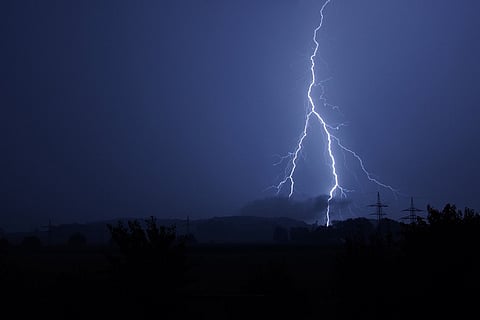

On October 15, four women farm labourers died and 26 others were hospitalised in Tamil Nadu after they were struck by lightning on an open farm. The victims were working on a groundnut field at Thaneerpandalpatti village in Pudukottai taluk when the lightning struck.
This accident caused by a natural phenomenon, while shocking, is not new to Tamil Nadu. According to the National disaster management authority (NDMA), between 2011 and 2015 alone, 500 people in Tamil Nadu died due to lightning strikes and on an average, over 2,500 people die due to this phenomenon annually across the country.
Going beyond just numbers, the NDMA, in 2018, came up with directives for states to follow in order to prevent further such deaths. However, TNM has learnt that despite the continuing fatalities, the TN government and state disaster management authority (SDMA) is yet to implement the eight steps charted by the NDMA to develop an action plan to deal with thunderstorms and lightning.
This includes steps such as Government engagement to form a dedicated policy decision committee to discuss strategy, appointing a State Nodal Department and officer to oversee the action plan and Vulnerability assessment to identify vulnerable areas, assets and populations in order to establish priorities areas for Early Warning, forecast/ alerts activities.
The State was further told to coordinate with the Indian Meteorological Department (IMD) to develop reliable and accurate localised early warnings and dissemination plan. At the micro-level, the NDMA had called for hazard-zoning where areas must be clearly marked, as to whether it is vulnerable to mild, moderate or intensive hazard and the probable cost of damage to crops from the squall events or thunderstorm of different intensity. The state government was also told to map lightning affected zones based on the data if deaths available with the NCRB.
However, when TNM contacted the SDMA they stated that the action plan was not in place. All that had been done from August last year, when the directives were given, was the distribution of a circular highlighting 'Dos and Don'ts' during a lightning strike.
"We are still in the process of implementing the instructions. We are going to install 1300 lightning alert systems, one for every block," says R Balaji, Assistant Commissioner in the SDMA. "We are discussing with other government agencies," he adds.
When asked why it was not already done despite the continuing deaths in the state, the official claims that such deaths are higher in other states.
"In Tamil Nadu, there are deaths but (numbers are) not that high," he justifies. "We have not installed the necessary systems yet but we will."